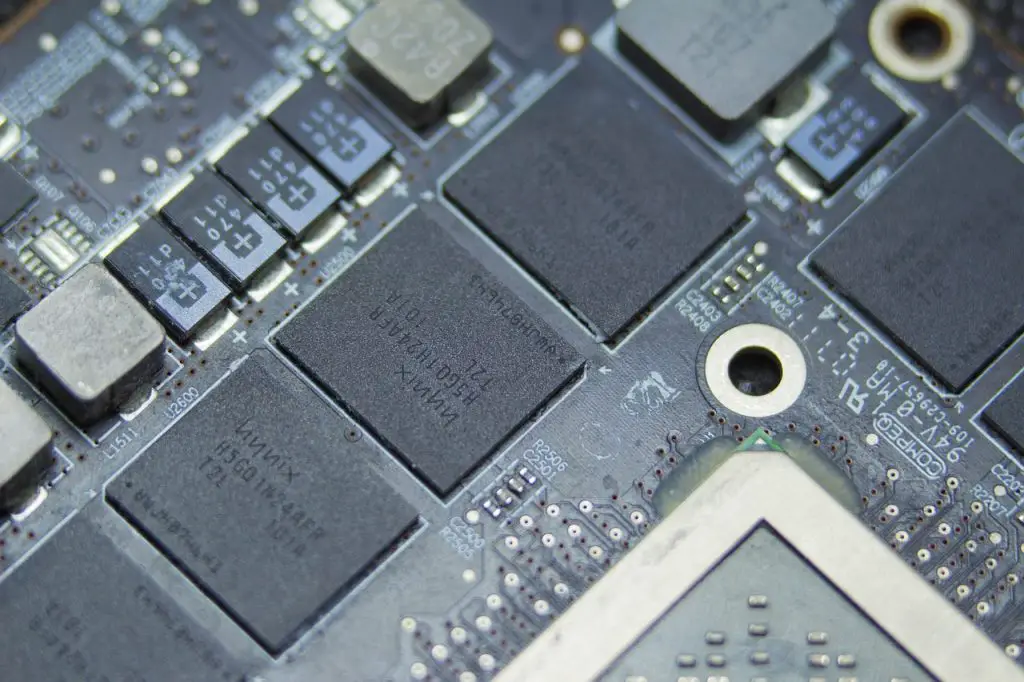This post may contain affiliate links which means I may receive a commission. Learn more on my Privacy Policy page.
Top 5 Cutting Edge Technologies That Will Impact Our Future
Utilizing cutting edge technology can help your business stay ahead of its competition, as well as increase productivity.
Cutting-edge technologies tend to be released early so companies can work out any kinks before going mainstream, which may provide them with an edge in terms of revenue generation. Unfortunately, though this may create an early market advantage, investing money prematurely in something may never work properly and waste your precious capital resources.
Artificial Intelligence
Artificial intelligence (AI) has made significant strides across several industries. From automated trading to analyzing big data, AI is becoming a staple of modern life – so much so that many companies are searching for qualified AI specialists.
Palo Alto Networks integrates AI into its cybersecurity systems to identify any suspicious activities that could indicate a data breach, while Zscaler uses machine learning technology to quickly process large datasets and make decisions, saving security analysts time while quickly detecting threats.
NVIDIA, another company using AI to enhance its products, produces graphics processing units used in AI-enabled devices like robots and self-driving cars, while offering software with advanced AI capabilities for drones, smart factories and smart cities.
Other AI-powered technology is being employed to assist physicians in making medical diagnoses. This software can detect anomalies on scans and make recommendations for treatment plans, while also managing patient records and insurance claims.
JPMorgan Chase is using AI to bolster their operations, and has successfully automated several processes with AI over the past two years, helping reduce staff numbers by over 8,000 people.
This company utilizes AI technology to make their products more accessible. For instance, their Live Automatic Captioning service translates video content into text in real-time based on natural language generation and deep learning techniques; other technologies use image and speech recognition techniques to generate captions or transcripts of events in real-time.
Internet of Things
The Internet of Things, commonly referred to as IoT, is an emerging network of physical devices–from fitness trackers and fridges–that use sensors to connect and exchange information. IoT devices are revolutionizing everyday life by automating tasks and streamlining processes for greater efficiency; businesses can utilize IoT monitoring equipment, supply chains and customer services more effectively than ever.
As much as Internet of Things is often perceived as just another tech gadget to show off, its real applications go much deeper. IoT could help businesses reduce costs by monitoring manufacturing and production systems for inefficiencies or bottlenecks that need attention, then adapt processes or systems accordingly to improve productivity, speed and quality.
Similar to how IoT devices could aid consumers’ safety, the IoT could help improve consumers’ health by giving access to data that allows for informed healthcare decision-making – this may include alerting them of potential health risks or symptoms they should address.
IoT technology is also revolutionizing retail by providing retailers with real-time data about consumer behavior, including which products are most popular and what customers are buying. This data allows retailers to make more targeted product recommendations, leading to increased sales and customer satisfaction. Furthermore, this connectivity enables cars to communicate both among themselves as well as with their owners; such communication allows the car to preheat before its driver arrives or book service appointments or provide navigational directions – helping reinvent automobiles!
Multiple leading tech companies have created products to address the increasing need for IoT. IBM provides an IoT platform that enables enterprises to manage assets and operations through machine-learning and predictive analytics, while Intel made waves with its edge computing solutions, which process, analyse, and store data closer to its source rather than remote data centres. Intel offers technologies such as its Xeon Scalable Platform which offers better performance and memory density; Atom P5900 10nm SoC for 5G networking infrastructure as part of their edge computing solutions.
Virtual Reality
Virtual reality (VR) has emerged as one of the most exciting technological innovations of recent times, creating an immersive environment in which users can engage multiple senses in an attempt to simulate real life experience.
Virtual reality (VR) technology offers endless opportunities for entertainment or practical uses. VR can be used for training employees or providing patients with information about medical procedures without physically being present. While still developing, this industry holds great potential to revolutionize many sectors.
VR companies that are leading this technology include Samsung, which recently announced that it would release its first VR headset by 2023; Google with their Daydream VR platform; and Apple who may release an iPhone-based VR headset in the future.
There are various software and hardware developers offering virtual reality (VR) products and services, such as Oculus VR, HTC Vive, Sony PlayStation VR and Microsoft HoloLens.
Other technology firms are creating the next stage of VR: Augmented and Mixed Realism (AR/MR). This technology merges the physical world with virtual ones to provide users with an engaging new experience; for instance allowing people in different locations to interact through avatars or 3D characters.
AR is already being utilized in a variety of ways for both marketing and training purposes, including to enhance existing products or help customers visualize what a product might look like in their home or office environment. AR also helps save both time and money when used to train employees or patients quickly and effectively, saving both both parties both valuable time and effort.
Robotics
Robotics is the intersection of science, engineering and technology that produces robots to simulate or replace human action. Well-known examples are R2-D2, Terminator and WALL-E robots; however companies such as UBTech, Boston Dynamics, iRobot and Caterpillar are developing sophisticated robotic technologies beyond what can be found in popular culture.
One of the more innovative innovations in robotics is flexible robot technology. This type of robot can be programmed for multiple tasks and highly customized – making it a valuable asset in manufacturing industry applications.
Cortex from Autonomous Manipulation and Perception uses neural network technology to reclaim recyclable materials from waste at construction, demolition, mixed-waste sites and more. The robot can identify different materials before plucking them from conveyor belts for recycling – this system can be installed and set up within two days and fits over any conveyor belt.
iRobot is another company using advanced robotics to improve our planet, producing domestic and industrial cleaning robots for tasks such as vacuuming, mopping and dusting. Furthermore, these intelligent bots can adapt their behavior based on their environment – helping reduce chemicals used and waste generated through cleaning activities.
iRobot is developing an exciting system to allow their robots to be utilized in hazardous environments such as oil pipeline inspections, medical diagnosis and detection investigations. While this could create many new jobs in robotics, any time a new technology emerges some existing positions may be at risk of being eliminated altogether.
Blockchain
Blockchain technology enables an unbroken digital record of transactions. This unalterable ledger is secure, incorruptible and tamper-proof – ideal for the transfer of assets (money, goods or property). While Bitcoin may be its most famous use case for tracking assets of value (including real estate sales contracts and medical records).
Cutting-edge technology can save your business both time and money, but its risks must always be carefully assessed before adopting it into existing operations. Most technologies have yet to be rigorously tested before being sold as solutions; you could end up buying something that may or may not work at all, leading to large expenses in repair bills for damaged equipment or even complete failure of services altogether. It may be beneficial to launch one small project first before expanding its applications further.
Cutting-edge software carries with it the risk of the company you bought it from going out of business, leaving you without support or updates and forcing you to find another solution to address your problem. Refunds or some form of compensation might be offered but that won’t solve anything; only finding another product would solve this issue permanently.
Cutting-edge software can give your business an edge in an increasingly competitive world, but don’t be intimidated from taking a step back to evaluate current processes that need adjusting. Many processes costing too much can be made more efficient using cutting-edge tech – saving your business money over time and providing additional funds to invest elsewhere within your business.
For more, check out our post on the key differences between Quantum computing and Classical computing




